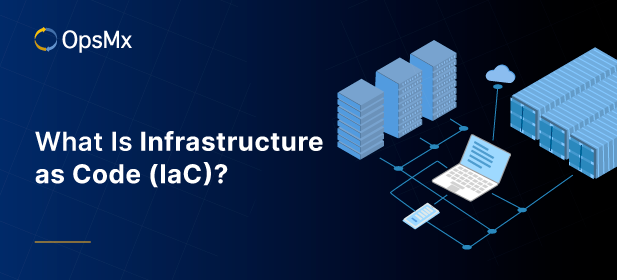Introduction
The last decade has seen a radical shift in managing IT infrastructure. As a junior engineer, I worked as a UNIX and LINUX administrator. We had servers ranging from Large Solaris Frames to smaller outdated HPUX servers. At the end of my junior engineer tenure, we migrated to VMs. Managing VMs was easy, but their use grew exponentially, and at one point in time, a team of six people had to look after 1800 VMs. It became nearly impossible to keep a record of their configurations on excel sheets.
The next radical shift in servers was the movement to cloud environments. And with the advent of cloud computing came the concept of “Infrastructure as Code” (IaC). IaC was conceptualized to manage IT infrastructure for the age of cloud, microservices, and continuous delivery. Modern architecture approaches and treats the infrastructure as if they are software. This approach enables organizations to automate the process of provisioning infrastructure using various tools.
Definition
Infrastructure as Code or IaC is the process of provisioning and managing infrastructure defined through code instead of doing so with a manual process.
Examples include testing and version-controlling infrastructure code and checking it in alongside the application code it supports.
Why Implement IaC?
Dynamic infrastructure enables efficient creation, destruction, replacement, resizing, and moving. Such systems should be designed to assume that the infrastructure will continually change, whereas the software should continue running. The dynamic architecture makes it easier to tweak the software and make infrastructure changes when necessary.
In a large-scale cloud infrastructure, infrastructure as code solved the problem of environment drift in the release pipeline. Without IaC, teams must maintain the settings of individual deployment environments. Over time, each environment becomes a snowflake, a unique configuration that cannot be reproduced automatically. Inconsistency among environments leads to issues during deployments. With snowflakes, infrastructure administration and maintenance involved manual processes that were hard to track and contributed to errors.
What are the Benefits of IaC?
IaC can provide stable environments rapidly and at scale. Stable environments can be achieved by eliminating the manual configuration of environments. Consistency can be enforced across the software delivery pipeline with code scripts for infrastructure configuration. Infrastructure deployments with IaC are repeatable and prevent runtime issues caused by configuration drift or missing dependencies. DevOps teams can work together with a unified set of practices and tools to rapidly and reliably deliver applications and their supporting infrastructure at scale.
- Faster speed and consistency: IaC aims to make things faster by eliminating manual processes and the slack in the process. A code-based approach makes it easier to get more done in less time. There is no need to wait for the IT admin to manually complete the task before he can get to the next one. This also means that you can iterate quickly and more often. Consistency is another vital benefit of IaC. You do not need to worry about tasks not being completed because it is a weekend or because your admin is focused on something else. Also, you can implement changes globally while keeping the exact software version, etc.
- Efficient software development lifecycle: IaC shifts the power into the developer’s hands. As the infrastructure provisioning becomes more reliable and consistent, developers can focus on application development more. Also, they can script once and use that code multiple times, thus, saving time and effort while keeping complete control.
- Reduced management overhead: In a data center world, there was a need to have admins govern and manage storage, networking, computing and other layers of hardware and middleware. IaC eliminates the need for these multiple roles. Those admins can now focus on identifying the next exciting technology they want to implement.
- Faster speed and consistency: IaC aims to make things faster by eliminating manual processes and the slack in the process. A code-based approach makes it easier to get more done in less time. There is no need to wait for the IT admin to manually complete the task before he can get to the next one. This also means that you can iterate quickly and more often. Consistency is another vital benefit of IaC. You do not need to worry about tasks not being completed because it is a weekend or because your admin is focused on something else. Also, you can implement changes globally while keeping the exact software version, etc.
Challenges Implementing IaC and How to Tackle them?
IaC is indispensable for modern software delivery. While IaC adds a lot of value, there are three main challenges that teams need to overcome.
Coding language dependency
IaC is all about configuration codes. Hence, developers must learn extra scripts and languages to work with the available tools in the market. Most commonly used languages are JSON, HashiCorp Configuration Languages (HCL), YAML, Ruby, etc.
Security assessment processes
IaC adds more flexibility and, at the same time, increases responsibility and risk. IaC can easily be abused. Therefore, you might need to take extra steps to ensure you’re establishing guardrails for complete governance.
IaC monitoring can be challenging
We need additional tools to track who is provisioning what, where, how often and the cost. You might find it challenging to track the usage/capacity by your old monitoring tools, such as worksheets. Moreover, if you are a global company, you might need to think of better monitoring tools.
Conclusion:
IaC has become a vital part of the modern software delivery process. Most commonly used IaC platform is Terraform. If you are using Spinnaker for your software devery pipelines, Terraform code is also treated as an application. Read more about integrating Terraform with Spinnaker here.
Infrastructure as Code can simplify and accelerate your infrastructure provisioning process, help you avoid mistakes and comply with policies, keep your environments consistent, and save your company a lot of time and money.


0 Comments